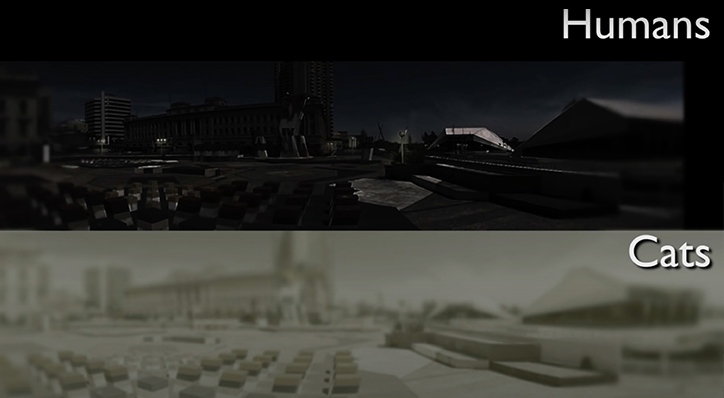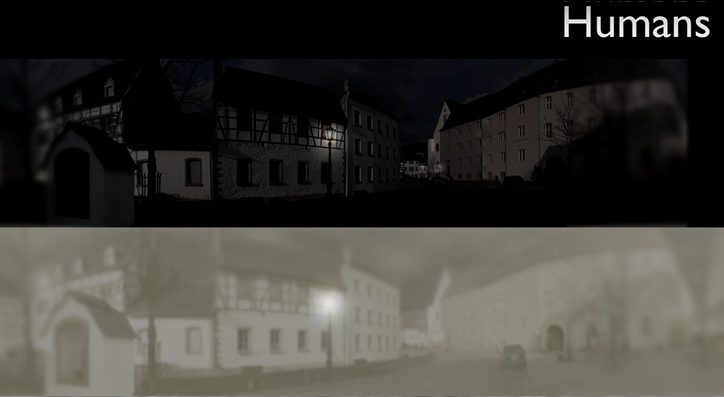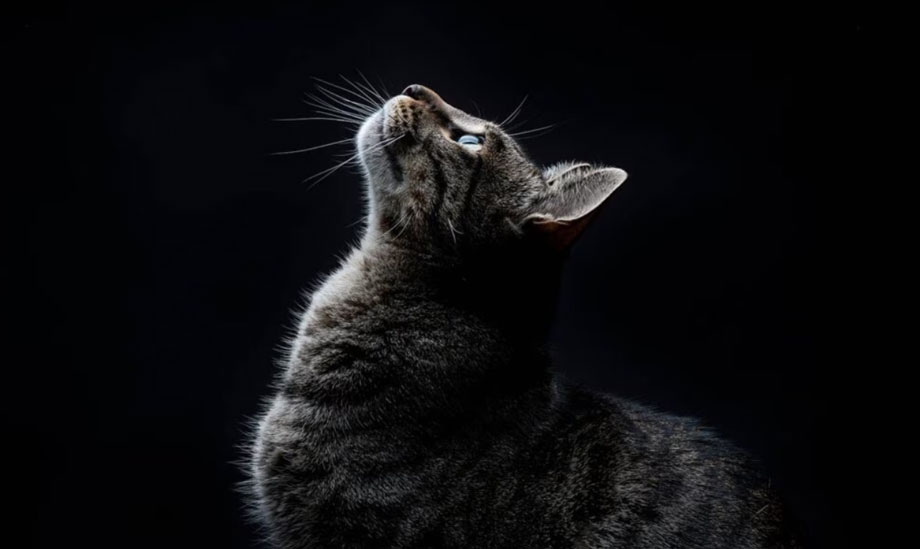Seeing like a cat in the dark – that’s what you often wish for when you’re once again groping for the light switch in the dark or painfully bump into something. The question is: can cats really see in the dark as legend has it? And if so, how exactly do cats see at night?
Cats see in the dark – truth or myth?
Cats are said to have a keen eye – especially in the dark. As hunters, the animals need to be able to see well and react quickly, even in low light. To be successful in the hunt, they have to orient themselves to their prey. The classic prey animals of cats are mice, i.e. animals that often use the protection of twilight and darkness to hunt for food. Therefore, it stands to reason that cats, like owls or martens, can also see well in the dark to catch their prey. However, cats also need a certain amount of residual light to be able to see. However, this is significantly less than in humans. Cats can’t see anything at night if there is no light at all.

How does a cat’s night vision work?
The cat’s eye is constructed somewhat differently from the human eye due to its development as a partially nocturnal hunter. The eyes of vertebrates have so-called photoreceptors on the retina. These are light-sensitive cells that transmit an impulse to the optic nerve when excited by light. These photoreceptors are divided into rods and cones. While the cones transmit light of different wavelengths to the brain as “color”, rods are responsible for light-dark vision. Cats have considerably more rods on their retina than humans. For this reason, cats can see better in the dark than humans. Due to the increased number of rods in the cat’s eye, a cat only needs around a sixth of the amount of light that a human eye needs to see anything. On the other hand, they have fewer cones, which means that color vision is less well developed in cats.

Why do cats’ eyes glow at night?
Another anatomical structure also helps cats to see in the dark: The so-called “tapetum lucidum” is a layer of cells that lies behind the retina in cats. Like a reflector, light is reflected back and passes through the retina on its way back. This increases the “light yield” of the eye. This reflective cell layer can also be seen when a cat’s eyes are illuminated in the dark: They light up. This is because so much light penetrates the tapetum through the wide-open pupils of the cat’s eyes that this flash is also perceived by the human eye.
The sensitive cat eye
Now the question remains as to what the cat’s light-sensitive eyes do in full sunlight. But here, too, the cat’s eye is perfectly adapted: To reduce the amount of incoming light, the pupil, which is wide open in the dark, is narrowed into a slit so that less light enters. Another special feature is that your cat does not have to blink and does not see all colors the way we humans do.
In fact, cats are very well adapted to seeing in the dark. And if the cat’s eyes are not enough, they still have their whiskers and extremely good hearing to find their way in the dark.
Because the cat’s eye is so sensitive, it can quickly lead to health problems. A visit to the vet is sometimes essential and can quickly become expensive. So that you don’t have to worry about the cost of treatment, our cat surgery and health insurance protects you from financial worries.
